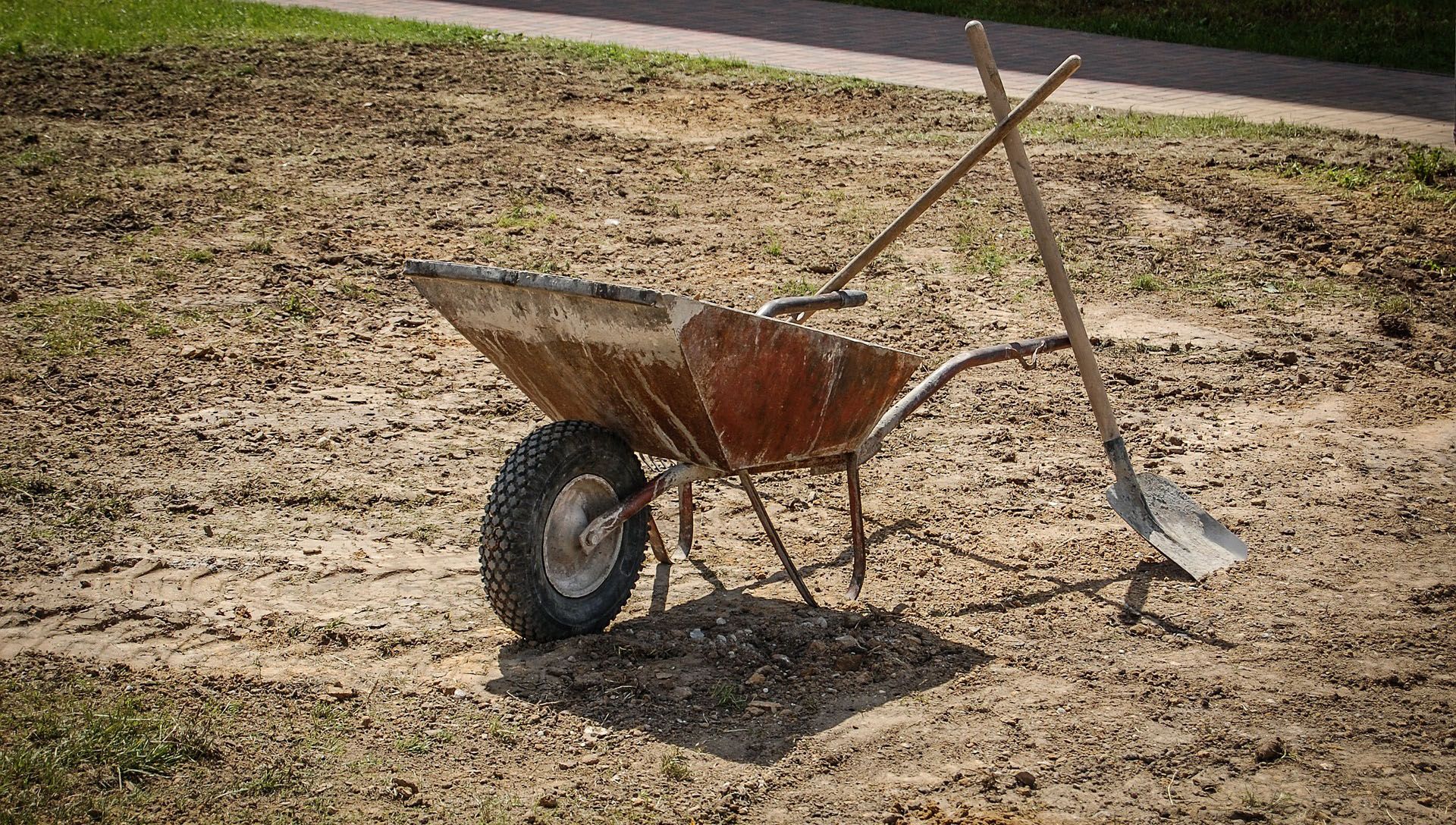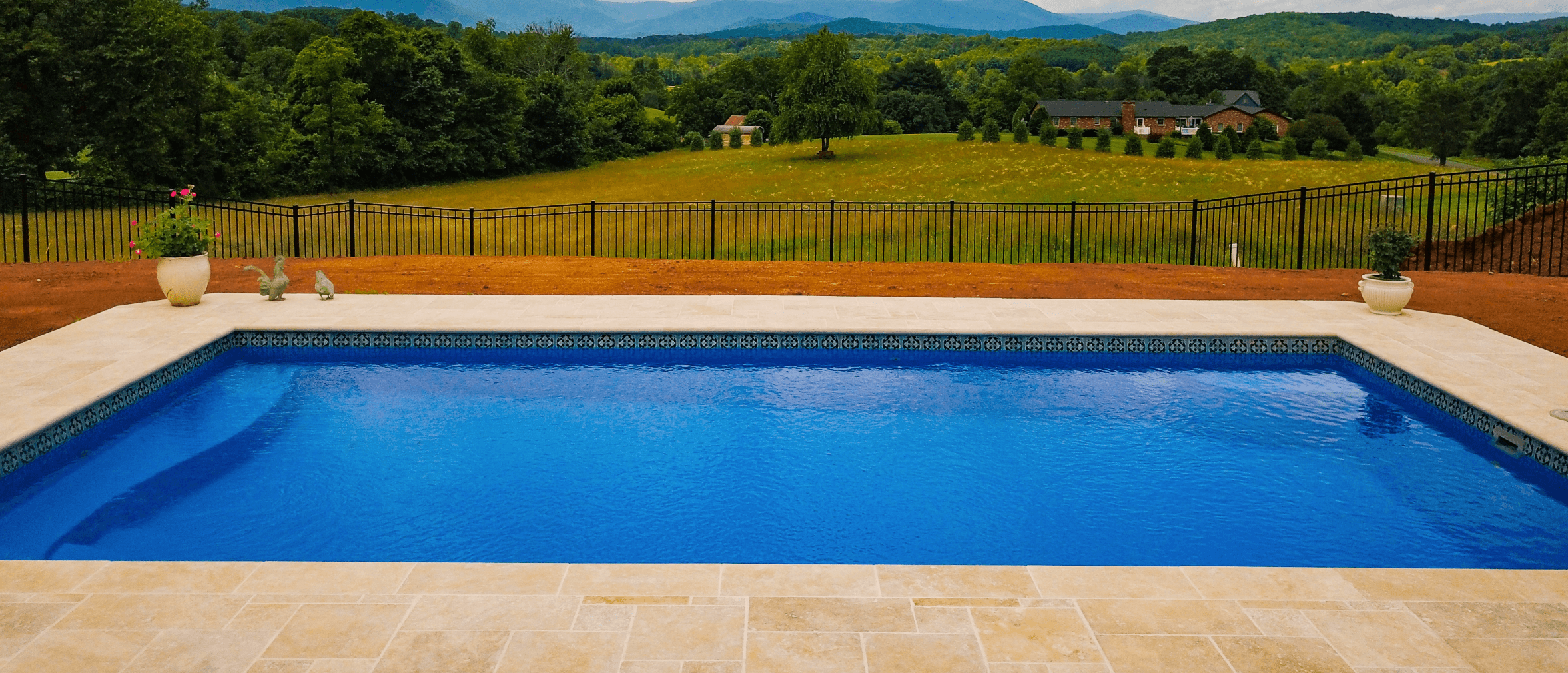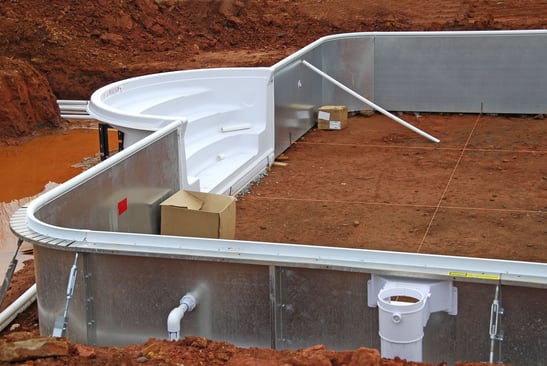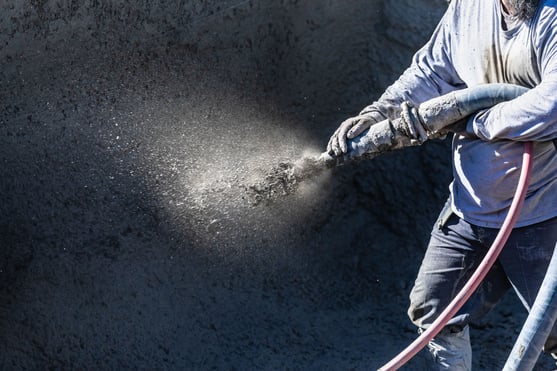
DIY Inground Pools: Costs, Types, and Problems to Consider
Fiberglass Pool Information | Installation & Construction | DIY Fiberglass Pools | Cost and Pricing | Swimming Pool FAQs | Concrete Pool Information | Vinyl Liner Pool Information
So you’re up for a home improvement project, only this time you’re taking on something big...you want to build your own swimming pool.
And that’s awesome. We know how rewarding it can be to complete a project and benefit from it for years.
It might fill you with a sense of pride to do things on your own and to do a good job, or you might just want to save some money.
Swimming pools can be tricky though, and mistakes can be costly. So, how will you know if a DIY inground pool is a good idea or if you’ve undertaken too much?
Our area of expertise is on fiberglass pools. However, our main goal is to educate you on all things swimming pools, and if you’re interested in a DIY inground pool, we want to make sure that you have all of the facts before taking that first step.
In this article, we’ll break down the basics of how to DIY the different types of inground pools, the things you’ll need, and the costs, problems, and challenges you may face along the way.
Let’s start by looking at the three main inground pool types and what it means to do a self-installation.
Jump to...
DIY Inground Vinyl Liner Pools

DIY Inground Fiberglass Pools
Since we’re first and foremost fiberglass pool experts, we think it’s a good idea to start here. It’s not uncommon for people to request just the fiberglass pool shell, but what does the DIY installation process entail?
1) Well, to start, it means doing your own excavation. Typically, this requires renting a trackhoe (also called an excavator) which can cost around $2,000 per week.
2) You’ll also have to have the dirt hauled away unless you have space to keep it on your property. Trust us when we say it’s a lot of dirt. There are 1.35 tons of dirt per cubic yard (3'x3'x3'). For example, a 15'x30' inground pool that goes from 3' to 6' will add up to at least 60 tons of dirt.
You may opt to hire your own crew to dig the hole, who may or may not bring their own equipment and haul the dirt away for you. While you might save some money doing this part of the job yourself (or outsourcing it on your own), you definitely won’t save any time or energy.
A do it yourself fiberglass pool installation makes you the supervisor of the project, and ultimately, you are in charge of how everything turns out. When it's handled for you, you don’t have the headache of worrying about whether your pool project is being done right.
3) Next, you have to install the shell. This is very important because the pool shell needs to be level. If you do this part wrong, you could end up with spider cracks on your beautiful new pool before you ever really get started.
4) Installing the plumbing and pouring the backfill is the next step in the process. With a fiberglass pool, you’ll want to fill the pool with water while you pour the backfill to equalize the pressure. This can be tricky, so you need to be absolutely certain that you can do it correctly before getting started.
Take a look at our video below to see how fiberglass pools are installed via the River Pools Way (an installation method developed for installers to use). If you really want to install your own fiberglass pool, you should definitely watch this video.
5) Once your pool is fully installed with the plumbing, fixtures, and backfill completed, you’ll still have to think about your coping and patio/decking. You'll likely choose between cantilevered concrete coping and paver coping, but you may also opt for brick or travertine.
(Click here to see our full guide comparing the different inground pool coping options).
Pouring coping around an inground fiberglass pool can take a little more experience than you might realize, so if you hire someone to do this for you, make sure that they have done it before.
How much money can you save with a DIY inground fiberglass pool?
Overall, installing your own inground fiberglass pool can save you between 6 and 10 thousand dollars. However, if something goes wrong, you might end up spending a lot more trying to fix it. You may also experience more delays or setbacks than you would if you left it up to an experienced professional.
As we covered in our post on DIY fiberglass pools, in addition to the pool shell, you’re going to have to pay for:
- Equipment rental (one week): $2,000
- A crane: $400–$800
- Water (trucked in): $700–$1,200
- Backfill material: $1,000–$2,000
- Miscellaneous plumbing: $300–$600
- Pool equipment: $700–$1,200
Keep in mind that these are rough estimates as prices vary by region.
Our personal advice is to let the experts install the pool for you. It costs more, but the risks are lower, the project gets done faster, and you have experts on hand to make the right decisions the first time around.
Your biggest challenges: Getting the pool level, installing the pool without damaging it, and pouring the coping.

Want to see how much your fiberglass pool might cost with professional installation?
Use our Design and Price Tool to walk through your options and approximate price!
DIY Inground Vinyl Liner Pools
While some people do opt to take on a DIY inground fiberglass pool project, most DIY inground pool projects are with vinyl liner pools. This is because the kits with most of the materials you need are readily available offline and online.
Of course, as with fiberglass pools, you’re going to have to do your own excavation, backfill the pool, install the liner, plumbing, and hardware, and do the coping and patio.
In addition, you’ll have to assemble the pool, make sure that it's level, and carefully trawl the floor of the pool. This can be a lot of hard work and it would help if you had a crew to do it with you.

How much will a DIY inground vinyl liner pool cost?
With vinyl liner inground pools, you can expect to pay around $5K and up for basic, small inground pool kits (12x24). These come in a variety of shapes and sizes, so the good thing is you’ll have a lot to choose from.
However, this is only the cost of the pool itself, and you will need other materials and equipment to complete your project:
- Excavators/equipment rental: $2,000 per week (takes 4-8 weeks to install)
- Concrete hand tools: $100 and up
- Vermiculite or grout: $800-$2,500
- Water: $700-$1,200
- Other equipment: $500 and up
For larger vinyl liner kits (20x40) you might pay 8-10K just for the kit, depending on the manufacturer.
As a general rule, you’ll pay more for bigger sizes and for polymer walls (you usually have the choice between polymer, steel, and aluminum). Polymer walls are basically plastic and they can bend inward from the pressure around the pool. However, they are better suited for certain types of pool systems.
Pro tip: If you plan to use a salt system, make sure to get a kit with polymer walls because salt corrodes metal.
What comes in a vinyl liner pool kit?
A standard inground vinyl liner pool kit will typically include steel or polymer wall panels, coping, a pool pump, filter, and skimmer system, the vinyl liner, and possibly some accessories like cleaning equipment.
Your biggest challenges: Getting the vinyl liner fitted just right and assembling the pool.
DIY Inground Concrete Pools
A concrete pool is among the trickiest to do on your own because you’re going to have to build it from the ground up. With concrete, you won’t have the pool shell or the pool kit to take care of a lot of the work for you.
Most people who build their own concrete pools are contractors or otherwise have some experience with construction or engineering.
Some people opt for a very simple concrete pool using basic materials like cinderblock and epoxy paint. These are basically makeshift pools and won’t turn out like the concrete pools that we traditionally see in homes and magazines.
Since concrete pools are made with shotcrete or gunite (which can be tricky to apply), most people won't build them on their own. If you’re inexperienced and set on getting a concrete swimming pool, you’ll find that it’s worth the money to pay for a professional builder to do it for you.

If you really want to DIY your concrete pool to save money (or for any other reason), it’s best to DIY parts of the project and leave the rest up to a professional builder for the best results. For example, you can do the excavation and patio and let the builder cover the rest.
Again, you can save some money, but there’s no going around the work that needs to be done in order to get a pool in the ground.
You’re going to need a lot of equipment and a lot of help for your DIY pool. While you can spend a few thousand dollars making a basic cinderblock swimming pool, it probably won't last you as long as a professionally constructed pool would.
However, if you’re still up for the challenge of undertaking a DIY inground concrete pool project, check out our article reviewing concrete pools and read about the best surfaces to use.
Your biggest challenges: Applying the concrete (shotcrete or gunite), surfacing the pool, and installing the plumbing and hardware.
Not sure which type of inground pool is right for you? Download our free ebook below for a full comparison of the main inground pool types.
DIY Inground Pool Problems
As you can probably imagine, there are tons of opportunities to make mistakes when building or installing your own swimming pool. Here are some of the biggest problems to consider before starting a DIY inground pool project:
Problem #1 Limited warranty
One of the perks of using a pool builder is that you (usually) get a full warranty. That means that if the builder makes a mistake during the construction process or if you have major problems with your swimming pool from the start, they'll be responsible for fixing it. On the other hand, if you install your own pool and make a mistake, the manufacturer is not responsible for covering it. DIY concrete pools as a whole have no warranties since they are made from scratch.
Problem #2 Missing insight
Not every pool project is the same. Some yards may require a retaining wall before a pool can be put in, for example, but a DIYer may not realize this until it’s too late. You might also hit ground water or rock while digging, or you may simply choose a bad spot for your pool. Allowing the experts to oversee your project is worth the additional cost in the long-run.
Problem #3 Timeline
Since you’ll be in charge of doing everything yourself, it’s normal to stumble a little along the way. However, that might affect the timeline of your installation, making the build time slower. This is especially likely if you have other responsibilities like work or parenting (we all do!). The longer you let your pool project sit unfinished, the higher your chances of encountering a problem will be and the more you'll have to pay for equipment rental. The faster you can get the project done (without cutting corners, of course), the better.
Keep in mind that Fiberglass pools are the quickest to install of the three inground pool types while concrete swimming pools take the longest.
Let’s face it, would you build your own house and expect it to be the best quality? Unless you’re an architect or work in construction, probably not. A pool is a big project, and letting the professionals do what they do best will ensure that your pool is built or installed properly and functions as it should over its lifetime.
If you’re mainly looking for a budget-friendly pool and you’re not that interested in the DIY aspect, you might want to consider an above ground pool like a shipping container pool, or you can opt for a compact swimming pool.
Want to see how much a full sized inground fiberglass pool would cost you? Try out our fiberglass pool cost calculator (it’s 100% free) to get an estimate for a high-quality fiberglass pool plus installation.
Think you want to go fiberglass? Take a look at our models and feel free to contact an independent installer directly to discuss the specific needs of your project.
Are you planning on installing your swimming pool or will you have a builder do it for you? Let us know in the comments below!
Up Next:
Pool Patio Ideas and Options: A Personalized Guide
How Long Do Vinyl Liner Pools Last?
A Guide to Inground Swimming Pool Size, Costs, and Prices: Everything You Should Know
Editor's note: This article was updated on September 1, 2023.






